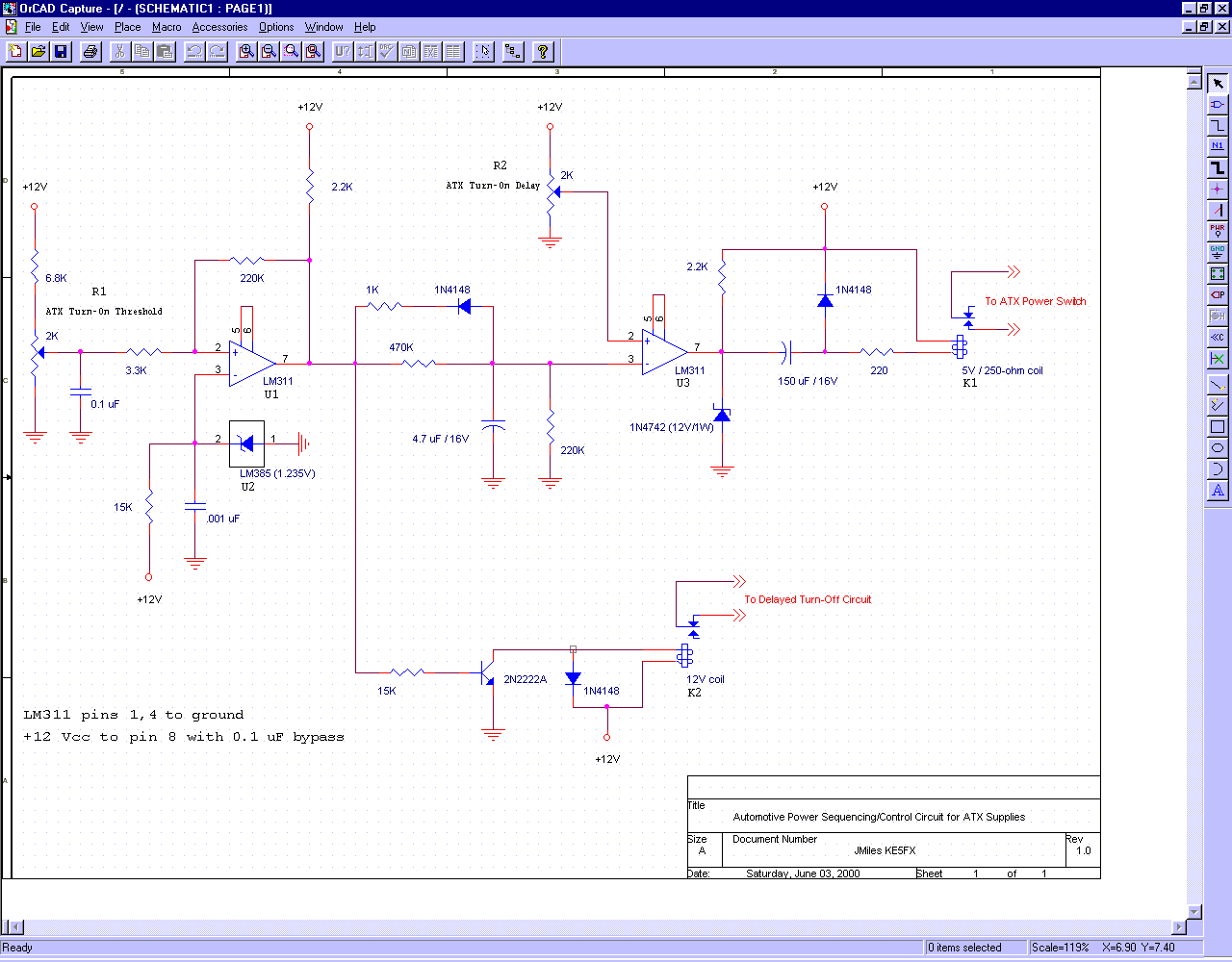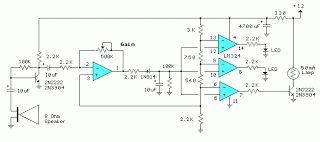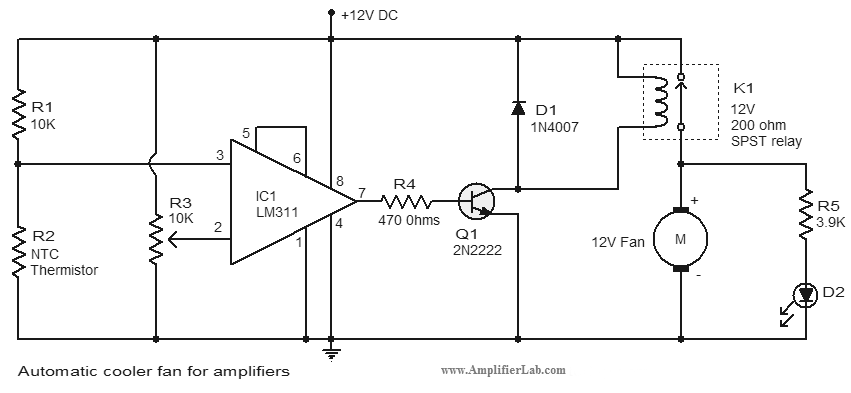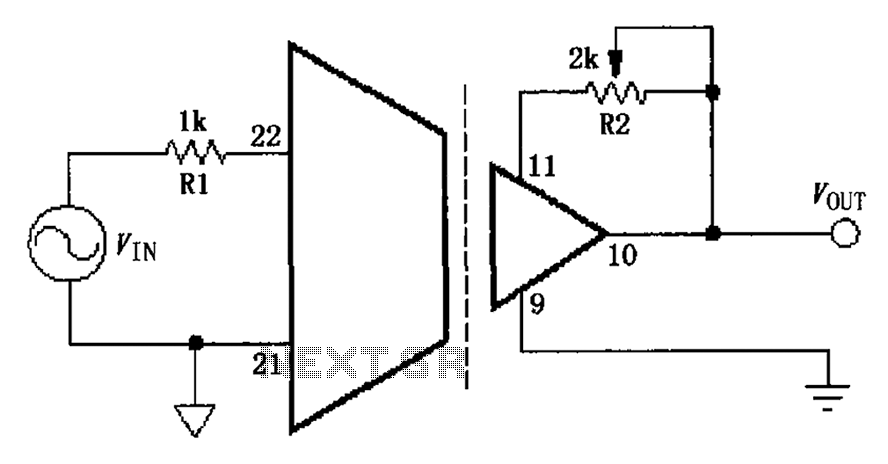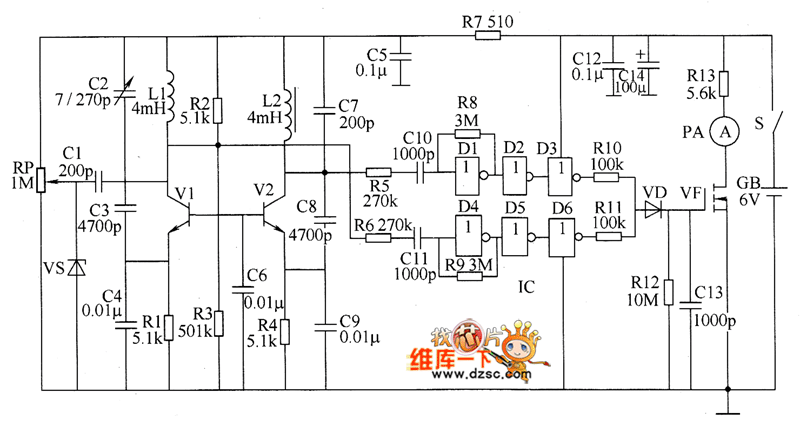
Simple low power Inverter Circuit (12V DC to 230V or 110V AC) diagram using CD4047 and IRFZ44 power MOSFET
%2BCircuit%2Bdiagram%2Busing%2BCD4047%2Band%2BIRFZ44%2Bpower%2BMOSFET.png)
This simple low-power DC to AC inverter circuit converts 12V DC to either 230V or 110V AC. By making simple modifications, it is also possible to convert 6V DC to 230V AC or 110V AC. This inverter can be utilized for home needs to power light loads (such as electric bulbs, CFLs, etc.) during electricity failures. The circuit can be constructed at a low cost using locally available components. A 12V rechargeable battery and a battery charging circuit are recommended for this DC to AC inverter. A previous circuit for the battery charger has been posted. A demonstration video is available at the bottom of the article. Additionally, it is suggested to review the latest SG3525-based inverter schematic. The power MOSFETs are configured in a push-pull arrangement (acting as a power amplifier). The MOSFETs switch according to pulses generated by a CD4047 astable multivibrator. An ordinary step-down transformer is used in this circuit, connected in an inverted manner, allowing the primary of a 230V to 12V-0-12V step-down transformer to function as a secondary for this inverter project.
This circuit operates by converting low-voltage DC power into high-voltage AC power, making it suitable for powering household appliances during power outages. The use of a 12V rechargeable battery provides a reliable energy source, while the battery charging circuit ensures that the battery remains charged and ready for use.
The core of the inverter consists of a CD4047 astable multivibrator, which generates a square wave signal used to drive the gate of the power MOSFETs. The push-pull configuration of the MOSFETs allows for efficient switching, enabling the inverter to deliver sufficient power to the load. The design can be easily modified to work with a 6V DC input, broadening its applicability for various battery types.
The transformer plays a crucial role in stepping up the voltage from 12V to the desired AC voltage levels of 230V or 110V. By connecting the transformer in an inverted manner, the primary winding is utilized to generate the necessary high voltage, while the secondary winding is effectively bypassed in this configuration. This approach not only simplifies the design but also enhances the efficiency of the inverter circuit.
The circuit can be assembled using common electronic components, making it accessible for DIY enthusiasts and engineers. It is advisable to follow safety precautions when working with high voltages and ensure that all components are rated appropriately for the intended voltage and current levels. Regular testing and verification of the circuit operation are recommended to ensure reliability and performance.This simple low power dc to ac inverter (dc to ac converter) circuit converts 12V DC to 230V or 110V AC. By doing simple modification you can also convert 6V DC to 230V AC or 110V AC. It can be used as inverters for home needs to enable light loads (electric bulb, CFL, etc) at the time of electricity failure.
You can construct this circuit ofsimpl e inverterat a cheap rate with locally available components. Use a 12V rechargeable battery and battery charging circuit for this dc to ac inverter. We have already posted the circuit for battery charger. Don`t forget to watch the demonstration video at the bottom of this article. I also recommend you to have a look into our latest SG3525 based inverter schematic. The power MOSFETs are connected in Push Pull configuration (Power amplifier). The MOSFETs will switch according to the pulse from CD4047 astable multivibrator. The transformer used here is an ordinary step down transformer which is connected in inverted manner. That is, the primary of a 230V to 12V-0-12V step down transformer can be treated as secondary for this inverter project.
🔗 External reference
This circuit operates by converting low-voltage DC power into high-voltage AC power, making it suitable for powering household appliances during power outages. The use of a 12V rechargeable battery provides a reliable energy source, while the battery charging circuit ensures that the battery remains charged and ready for use.
The core of the inverter consists of a CD4047 astable multivibrator, which generates a square wave signal used to drive the gate of the power MOSFETs. The push-pull configuration of the MOSFETs allows for efficient switching, enabling the inverter to deliver sufficient power to the load. The design can be easily modified to work with a 6V DC input, broadening its applicability for various battery types.
The transformer plays a crucial role in stepping up the voltage from 12V to the desired AC voltage levels of 230V or 110V. By connecting the transformer in an inverted manner, the primary winding is utilized to generate the necessary high voltage, while the secondary winding is effectively bypassed in this configuration. This approach not only simplifies the design but also enhances the efficiency of the inverter circuit.
The circuit can be assembled using common electronic components, making it accessible for DIY enthusiasts and engineers. It is advisable to follow safety precautions when working with high voltages and ensure that all components are rated appropriately for the intended voltage and current levels. Regular testing and verification of the circuit operation are recommended to ensure reliability and performance.This simple low power dc to ac inverter (dc to ac converter) circuit converts 12V DC to 230V or 110V AC. By doing simple modification you can also convert 6V DC to 230V AC or 110V AC. It can be used as inverters for home needs to enable light loads (electric bulb, CFL, etc) at the time of electricity failure.
You can construct this circuit ofsimpl e inverterat a cheap rate with locally available components. Use a 12V rechargeable battery and battery charging circuit for this dc to ac inverter. We have already posted the circuit for battery charger. Don`t forget to watch the demonstration video at the bottom of this article. I also recommend you to have a look into our latest SG3525 based inverter schematic. The power MOSFETs are connected in Push Pull configuration (Power amplifier). The MOSFETs will switch according to the pulse from CD4047 astable multivibrator. The transformer used here is an ordinary step down transformer which is connected in inverted manner. That is, the primary of a 230V to 12V-0-12V step down transformer can be treated as secondary for this inverter project.
🔗 External reference
